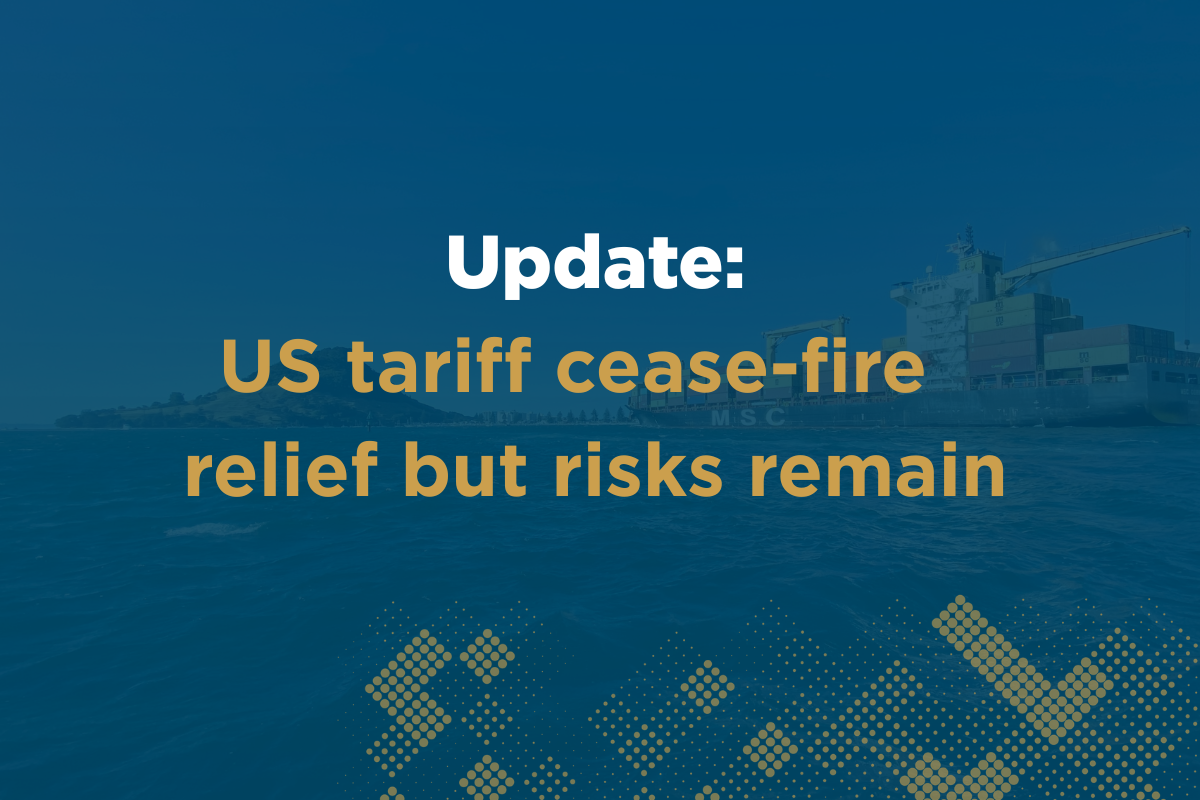Since our last update on US tariffs, there have been several significant developments unfold in the global trade landscape. Here is where things currently stand for New Zealand exporters.
New Zealand-origin exports
Following the announcement of the now-infamous “Liberation Day” tariffs, the US announced a 90-day pause. This has seen nearly all reciprocal tariff rates reduced to a baseline additional tariff of 10%. This baseline applies broadly to most countries and to the majority of products, including those from New Zealand.
For New Zealand exporters, this development hasn’t materially changed the initial position. New Zealand already faced one of the lowest reciprocal rates (set at 10%) and this baseline maintains the status quo. As it stands, most New Zealand-origin products imported into the US will continue to be subject to an additional 10% tariff.
However, several products have now been exempted from the additional rates entirely. Annex II of Executive Order 14257 outlines a list of exempt products, such as critical minerals and timber.
If your business involves exporting one or more of the products listed in Annex II, you may be able to avoid the cost pressures of the new tariffs, at least for now.
NZ exports incorporating international components
For New Zealand exporters whose products contain international components, there have been other key developments. Most significantly, the US has reduced its duties on most Chinese products to 30% while China’s retaliatory tariffs have dropped to 10% for a period of 90-days.
Similarly, other countries facing high tariffs, including Vietnam, Sri Lanka and the European Union have had their reciprocal tariffs reduced to 10% under the broader trade ceasefire, set to expire in July.
While there may be some relief now, if your products contain components from these countries, and they aren’t “substantially transformed” in New Zealand, they may not qualify for NZ-origin tariff treatment and run the risk of facing higher duties at the US border.
If you are not in the process of, or haven’t already done so, now is a critical time to assess your supply chain, ensure where your products fall within the origin rules, develop a contingency plan in case they might attract other countries’ tariff rates, and review your pricing structures to avoid unexpected costs.
What’s next
While the current environment offers a temporary reprieve, it is by no means a signal to relax. Global trade policy remains volatile and subject to rapid change. For New Zealand exporters, this is a crucial window to:
- Reassess market exposure – Understand which products are impacted and plan accordingly.
- Strengthen commercial relationships – Reinforce existing trade partnerships and build resilience into your supply chain.
- Explore alternative trade routes – Some markets may now be more economically viable. Conversely, the current tariff settings could present new opportunities in the US market.
- Review product classifications – Products listed in Annex II may be exempt from additional US tariffs. However, goods with components from other countries may still be subject to those countries’ tariff rates unless they meet transformation rules. Now is a good time to conduct a detailed review of the origin and composition of your products.
If you need help navigating what this means for your business, our commercial team can help with clear, strategic guidance. Get in touch.
This article was written with the help of Alice Croucher, Eric Stratton and Jarrod McDermott.
